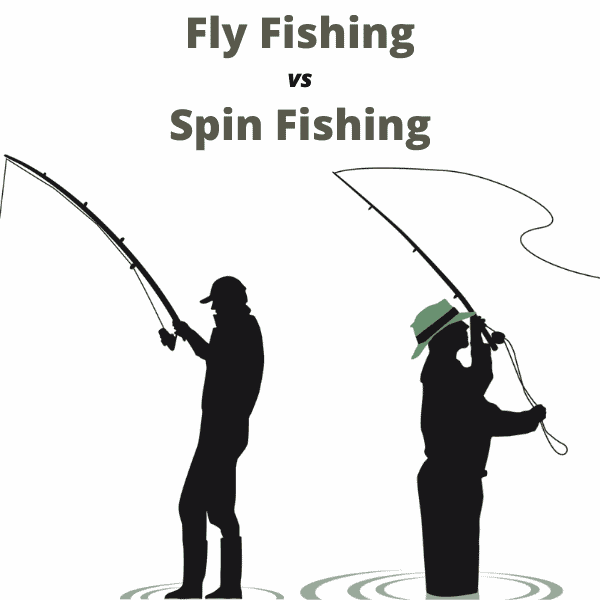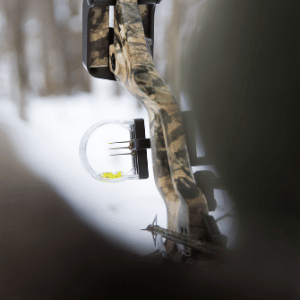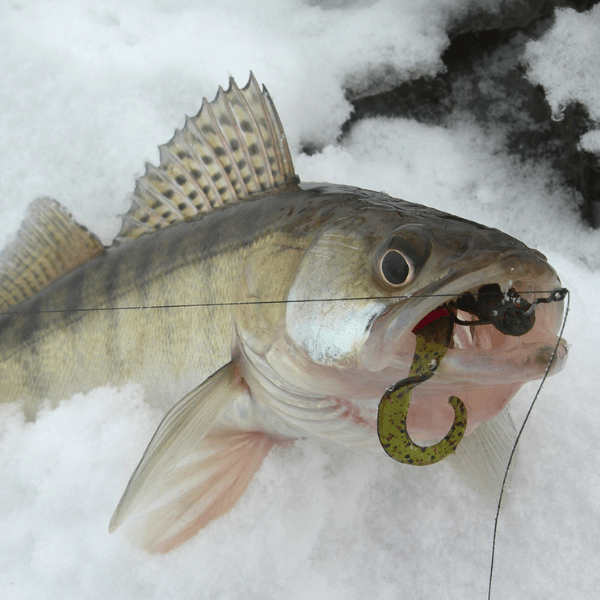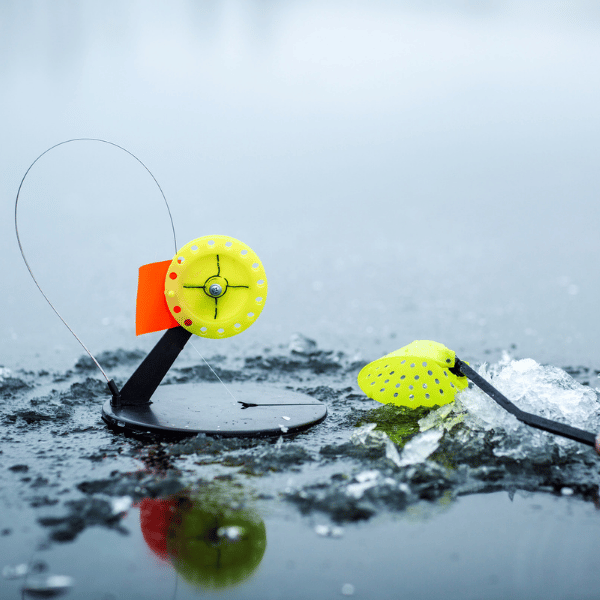How to Fish for Walleye
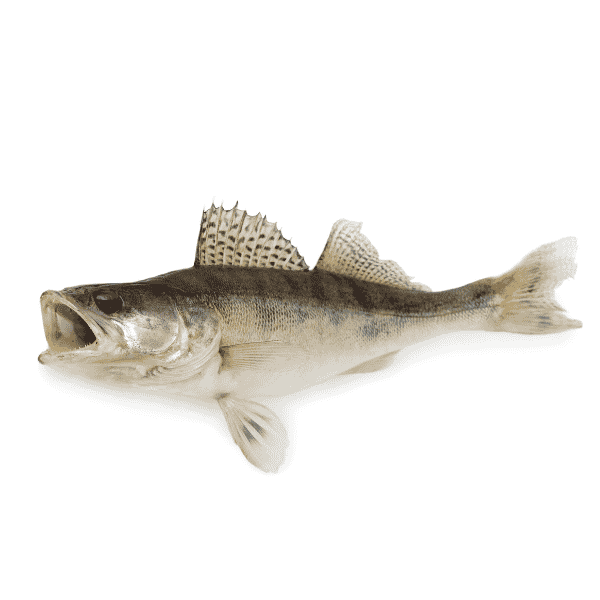
Walleye fishing can be quite exhilarating and challenging, but it can be a bit of a learning curve to know how to fish for walleye. These fish tend to present a challenge and understanding walleye fish can be difficult. If you want to be successful, you are going to have to know what you’re up against.
I’ve put together the ultimate beginner guide to walleye fishing based on my 15 years of experience walleye fishing countless lakes in Minnesota and Wisconsin, including Lake of the Woods – one of the best lakes for fishing walleye.
With a lot of practice and patience, you can learn how to catch walleye like the pros. But remember, a good angler is always learning. At the end of this article, we have several additional resources to check out to continue learning beyond the basics.
Contents
Where Do Walleye Hang Out in Lakes?

Walleye are very particular about where they live. Where they hang out largely depends on the time of year it is, as well as the time of day. The temperature of the water also plays a role in where they hang out. As such, it’s important to know and understand their behavior if you hope to be successful in walleye fishing.
While walleye can certainly thrive in waters ranging from 32°F to 90°F, they most enjoy an average temperature of 70°F. When you are walleye fishing on a lake, they can usually be found lurking near the bottom when it’s sunny out.
However, once dawn or dusk hits, walleyes will transition to the shallows so they can feed. River walleyes also exhibit similar behavior. They don’t like the sunlight and will do what they can to avoid it. As such, it isn’t uncommon to find them seeking refuge in holes or near drop-offs.
Walleyes are also known to hang out around dams. This keeps them out of and away from the current. Regardless of where walleye are found, they will always gravitate near packed sand or rocky beds. For cover, walleye tend to hide in weeds or any other submerged brush that they can find.
What Are Walleye Attracted To?
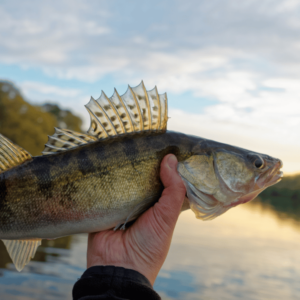
Walleye seem to love green and purple the most. It’s interesting to note, as fish are attracted to different colors. If you want the best success in walleye fishing, you’ll definitely want to invest in lures and bait that is colorful and bright.
It’s also important when and how you use your bait when walleye fishing. If the weather is particularly sunny, you’ll want to employ bait that is bright and flashy. The more vibrant your colors, the better your chances will be of nabbing some walleye.
Conversely, walleye fishing in low-light conditions will require a radically different approach. Instead of relying on your bright, flashy bait, you want to aim for something much more subdued.
If it’s cloudy or dark, you’ll increase your chances of landing a catch by using duller baits. White works, too, but you should use black or purple. Seasoned walleye fishing experts maintain that green is great for the day, while purple gets the best results at night.
It’s important to note that you can’t always rely on the same color combinations in every situation. While green and purple seem to be the most productive choices to use, there are certainly times when neither of these two colors will attract walleye.
In shallow waters, red is known to work on walleye quite well during the day. And in lakes that are especially dirty, gold can score you some fine catches, as well.
Bottom line? Come prepared. It’s a good idea to stock your tackle box with an assortment of colors. You never know what kind of condition the water is in until you get out on it. From there, you will have enough to work with until you find the color or colors that work best.
What Is Considered a Big Walleye?
If you catch a walleye that weighs 10 to 15 pounds, you’ve done pretty well for yourself. This is considered to be quite big and you’ve probably got a walleye that’s around 15 years old.
On average, however, a 15-year-old walleye that measures between 23 to 26 inches will typically clock in at around 4.5 to 6.7 pounds. So anything greater than that is going to be considered quite large. It’s important to know what you’re dealing with when you catch a walleye of a certain weight.
Young walleyes that are still in their first year of life will only weigh around .2 pounds. What’s more, they will only measure about 5 inches in length. Males are typically bigger than their female counterparts until their second year of life.
After that, females take the lead and will be bigger than males for the rest of their lives. If you ever catch a walleye that weighs around 10 pounds, you have almost certainly caught a female.
As far as what’s in the record books, the oldest walleye ever recorded was 29 years old and weighed in at a hefty 25 pounds! Most male walleyes can live 10 to 15 years, while females are known to live 25 or more years.
Where Is the Best Walleye Fishing?
When it comes to the sheer number of walleye and the rate at which they are caught, Michigan takes the top spot. The Detroit River is known to be an excellent location for catching some truly mammoth walleyes.
In fact, it’s not uncommon for anglers to regularly nab 10- to 15-pound walleyes on any given day. Especially during spring fishing tournaments, the walleyes of the Detroit River are abundant and healthy, making for an exciting time to go fishing.
There are many times when you’ll find 50-pounds baskets containing just five walleye! Professional walleye fishing expert, Dan Zwick, once boasted that the biggest walleye he’s ever caught came out of the Detroit River.
A close second would have to be Devils Lake, located in North Dakota. What’s more, this lake is ideal for walleye fishing on the ice. Once winter hits, Devils Lake becomes the ice fishing capital for fishers from all over the country.
Like the Detroit River, Devils Lake is also home to some incredibly large walleye. There have been more than a fair share of 10- to 15-pound walleyes come out of Devils Lake, making it a resourceful alternative for those who live closer to it than to the Detroit River.
What to Look for in Walleye Fishing Reports
Walleye fishing reports contain a lot of useful information, such as which locations are yielding the best fishing and what kind of lures seem to be attracting the most fish.
However, it’s often what’s detailed between the lines that you should learn how to decipher. Fishing reports are often the culmination of a lot of different eyes on the water. By having so many fellow fishers weighing in on what’s working and where, you can start to uncover patterns in the fish’s behavior.
Are people online saying that walleye are more active around spoons or live bait? Do they seem to get slower and less active in certain types of weather? If walleye are currently active, is it due to recent rain?
These are the kinds of things you want to get attuned to. What’s more, it’s a good idea to know when you should take your discussion off the internet and into a more private setting. Letting too many people get wise to your reports could ultimately put a damper on your walleye fishing success.
Be sure to check neighboring fishing reports, too, as this can be key in learning if fish are on the move. If you can figure out their movement patterns, you will undoubtedly gain the upper hand in learning the walleye’s whereabouts.
Just be sure not to broadcast your findings too much. The last thing you want is for someone to reap the rewards of your hard work and diligent research.
Walleye Fishing FAQ
A walleye that is 25 inches is almost certainly a female that is likely around 10 or more years old. Anything longer and you’re looking at a female that is upwards of 20 years old.
Walleye fishing tends to actually be better when the sun is not out, including at night. Many professional walleye fishing experts prefer to fish for walleye at night because the water is generally clearer and walleye can easily get spooked during the day, especially with a lot of sunlight.
The glowing effect in walleye eyes is caused by a reflective pigment that covers their eyes, known as tapetum lucidum. This tapetum lucidum in walleye eyes is what helps them see better at night, and by extension, makes them more active in the dark.
The largest walleye ever caught was recorded at weighing 25 pounds and measuring an impressive 41 inches. This record walleye was caught in Tennessee back in 1960.
Male walleye fish on average live between 10 to 15 years. Female walleye fish can live up to 25 years old or longer.
